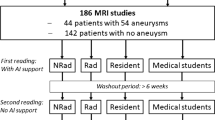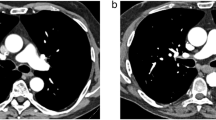Abstract
Purpose
Both respiratory and cardiac motions reduce image quality in myocardial imaging. For accurate imaging of small structures such as vulnerable coronary plaques, simultaneous cardiac and respiratory gating is warranted. This study tests the feasibility of a recently developed robust method for cardiac-respiratory gating. List-mode data with triggers from respiratory and cardiac cycles are rearranged into dual-gated segments and reconstructed with standard algorithms of a commercial PET/CT scanner. Cardiac gates were defined as three fixed phases and one variable diastolic phase. Chest motion was measured with a respiratory gating device and post-processed to determine gates. Preservation of quantification in dual-gated images was tested with an IEC whole-body phantom.
Methods
Minipig and human studies were performed to evaluate the feasibility of the method. In minipig studies, a coronary catheter with radioactive tip was guided in coronary artery for in vivo and ex vivo acquisitions. Dual gating in humans with suspected cardiac disorders was performed using 18-F-FDG as a tracer.
Results
The method was found feasible for in vivo imaging and the radioactive catheter tip was better resolved in gated images. In human studies, the dual gating was found feasible and easy for clinical routine. Maximal movement of myocardial surface in cranio-caudal direction was over 20 mm. The shape of myocardium was clearly different between the gates and papillary muscles become more visible in diastolic images.
Conclusion
The first clinical experiences using robust cardiac-respiratory dual gating are encouraging. Further testing in larger clinical populations using tracers designed especially for plaque imaging is warranted.









Similar content being viewed by others
References
Ogawa M, Ishio S, Mukai T, Asano D, Teramoto N, Watabe H, et al. 18F-FDG accumulation in atherosclerotic plaques: immunohistochemical and PET imaging study. J Nucl Med. 2004;15:1245–50.
Rudd JHF, Warburton EA, Fryer TD, Jones HA, Clark N, Antoun N, et al. Imaging atherosclerotic plaque inflammation with [18F]-Fluorodeoxyglucose positron emission tomography. Circ. 2002;105:2708–11.
Dunphy MPS, Freiman A, Larson SM, Strauss HW. Association of vascular 18F-FDG uptake with vascular calcification. J Nucl Med. 2005;46:1278–84.
Ter-Pogossian MM, Bergman SR, Sobel BE. Influence of cardiac and respiratory motion on tomographic reconstructions of the heart: implications for quantitative nuclear cardiology. J Comput Assist Tomogr. 1982;6:1148–55.
Klein GJ, Reutter BW, Ho MH, Reed JH, Huesman RH. Real-time system for respiratory-cardiac gating in positron tomography. IEEE Trans Nucl Sci. 1998;4:1509–12.
Martinez-Moller A, Zikic D, Botnar RM, Bundschuh RA, Howe W, Ziegler SI, et al. Dual cardiac-respiratory gated PET: implementation and results from a feasibility study. Eur J Nucl Med Mol Imaging. 2007;34:1447–54.
Lang N, Dawood M, Buther F, Schober O, Schafers M, Schafers K. Organ movement reduction in PET/CT using dual-gated list-mode acquisition. Z Med Phys. 2006;16:93–100.
Kokki T, Teras M, Sipila HT, Noponen T, Knuuti J. Dual gating method for eliminating motion-related inaccuracies in cardiac PET. In IEEE Nuclear Science Symposium Conference Record. Honolulu, Hawaii; 2007.
Sipilä HT, Teräs M, Kokki T, Knuuti J. A moving heart phantom for dual gated cardiac PET/CT studies. In IEEE Nuclear Science Symposium Conference Record. Honolulu, Hawaii; 2007.
Kovalski G, Keidar Z, Frenkel A, Sachs J, Attia S, Azhari H. Dual ”motion-frozen heart” combining respiration and contraction compensation in clinical myocardial perfusion SPECT imaging. J Nucl Cardiol. Jan 22 2009 [epub ahead of print].
Lucignani G. Respiratory and cardiac motion correction with 4D PET imaging: shooting at moving targets. Eur J Nuc Med Mol Imaging. 2009;36:315–9.
Büther F, Dawood M, Stegger L, Wübbeling F, Schäfers M, Schober O, et al. List mode-driven cardiac and respiratory gating in PET. J Nuc Med. 2009;50:674–81.
Durand-Schaefer N. Master Thesis, Kungliga Tekniska Högskolan, Stockholm, Sweden; 2008.
Williams G, Kolodny GM. Suppression of myocardial 18F-FDG uptake by preparing patients with a high-fat, low-carbohydrate diet. AJR. 2008;190:W151–6.
Park S-J, Ionascu D, Killoran J, Mamede M, Gerbaudo VH, Chin L, et al. Evaluation of the combined effects of target size, respiratory motion and background activity on 3D and 4D PET/CT images. Phys Med Biol. 2008;53:3661–79.
Lamare F, Teras M, Kokki T, Fayad H, Rimoldi O, Camici PG, et al. Correction of respiratory motion in dual gated cardiac imaging in PET/CT. In IEEE Nuclear Science Symposium Conference Record, Dresden, Germany; 2008.
Dawood M, Buther F, Jiang X, Schaefers M. Respiratory motion correction in 3-D PRT data with advanced optical flow algorithms. IEEE Trans Med Imaging. 2008;27:1164–75.
Teräs M, Tolvanen T, Johansson J, Williams J, Knuuti J. Performance of the new generation of whole-body PET/CT scanners: Discovery STE and Discovery VCT. Eur J Nucl Med Mol Imaging. 2007;34:1683–92.
Author information
Authors and Affiliations
Corresponding author
Additional information
Research Support: The study was supported by a grant from GE Healthcare. The study was conducted within the “Centre of Excellence in Molecular Imaging in Cardiovascular and Metabolic Research” supported by the Academy of Finland, University of Turku, Turku University Hospital and Abo Academy.
Rights and permissions
About this article
Cite this article
Teräs, M., Kokki, T., Durand-Schaefer, N. et al. Dual-gated cardiac PET–Clinical feasibility study. Eur J Nucl Med Mol Imaging 37, 505–516 (2010). https://doi.org/10.1007/s00259-009-1252-4
Received:
Accepted:
Published:
Issue Date:
DOI: https://doi.org/10.1007/s00259-009-1252-4




